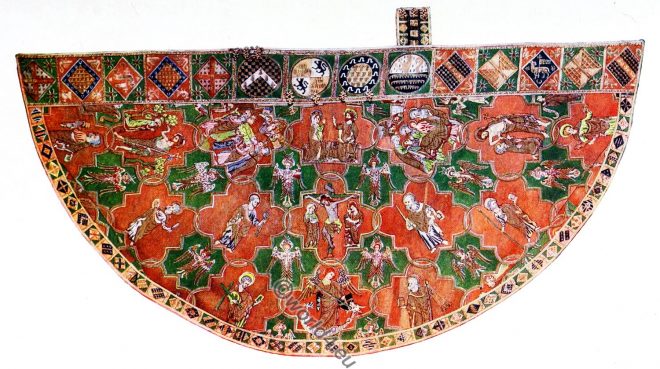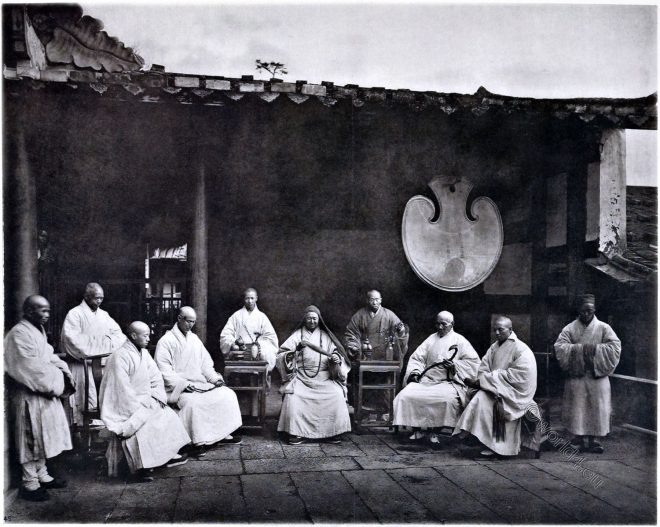The clothes of the high priests. Similarity of the Hebrew with the Egyptian priestly garb. The Ephod. The Mehil. Jewish high priest. Levites.
Tag: Ecclesiastical
Opus Anglicanum. The Syon Cope. Ecclesiastical needlework.
The Syon Cope.
A fine example of the ecclesiastical needlework for which England was noted in the thirteenth century; presented to the Duke of Northumberland by refugee nuns from Portugal, to whose convent it belonged, and whom he sheltered at Syon House during the Continental troubles of the early nineteenth century.
Jalali. Mohammedan Faqir. Sufi Muslim ascetic. Suhrawardiyya saint.
Jalali.-A class of Mohammedan Faqirs who take their name from their founder Sayyid Jalal-ud-din a pupil of Bahawal Haqq the Suhrawardiyya saint of Multan.
An Augur. Roman official priesthood.
Roman Auguries. They have existed since the foundation of Rome and exercise a practice derived from the Greeks and Etruscans, the Etruscans disciplina.
Omens and superstitions of southern India. Magic and Magicians.
Omens and superstitions of southern India by Edgar Thurston. Magic and Magicians. Exorcists and devil – dancers. The practice of magic.
Costumes of the spiritual orders. 10th to 18th century.
Monastic habit of spiritual orders from Poland, Germany and Flanders from the 10th to the 18th century.
Types of nuns. Habit of different orders. Ecclesiastical Monastic orders.
Female religious habit at the end of the eighteenth century. Nuns who live according to the Rule of St. Augustine, St. Dominic, St. Benedict and of Saint Angela Merici.
The Abbot and Monks of Kushan Monastery about 1870.
The similarity between the Buddhist faith and the Roman Catholic churches may be traced even more minutely than this. “Buddhists everywhere have their monasteries and nunneries, their baptism, celibacy and tonsure, their rosaries, chaplets, relics, and charms, their fast-days and processions, their confessions, mass, requiems, and litanies, and, especially in Tibet, even their cardinals, and their pope.”
Buddhist charm for ending drought. Chinese superstition.
Buddhist “Tso-fu-sze” ceremony performed to evoke rain and end drought, illustrated in a charm.
Taoist protective formulas against house fires.
Taoist priests use colored charms and rituals to protect and cleanse homes from fire, invoking the God of Fire.










